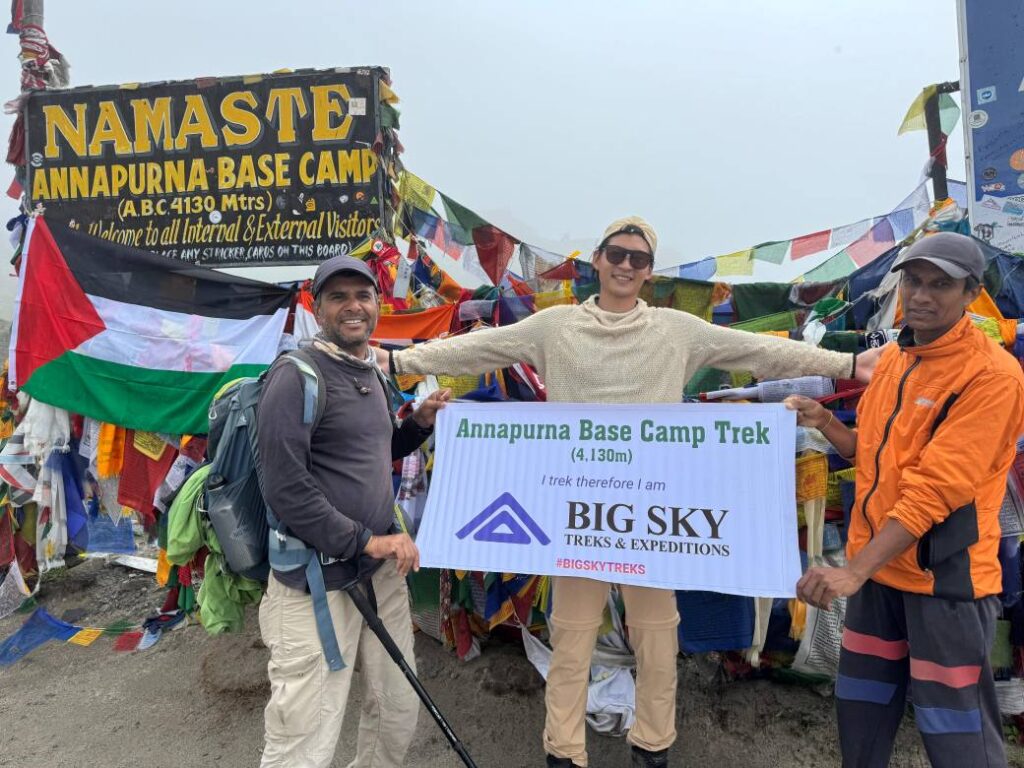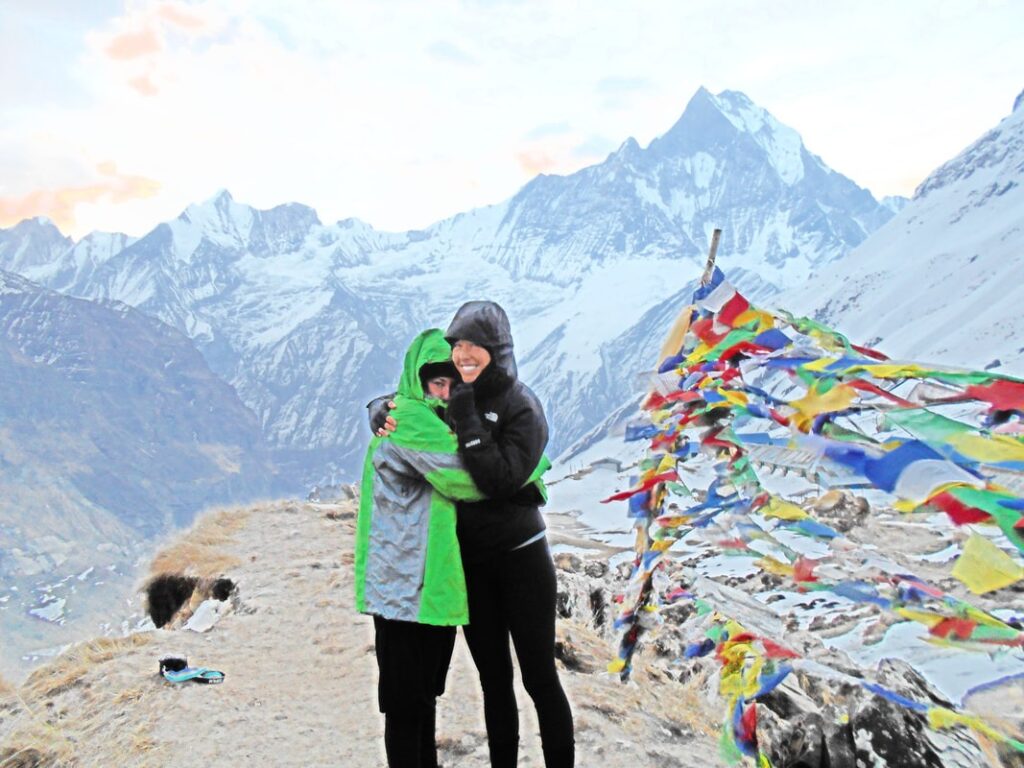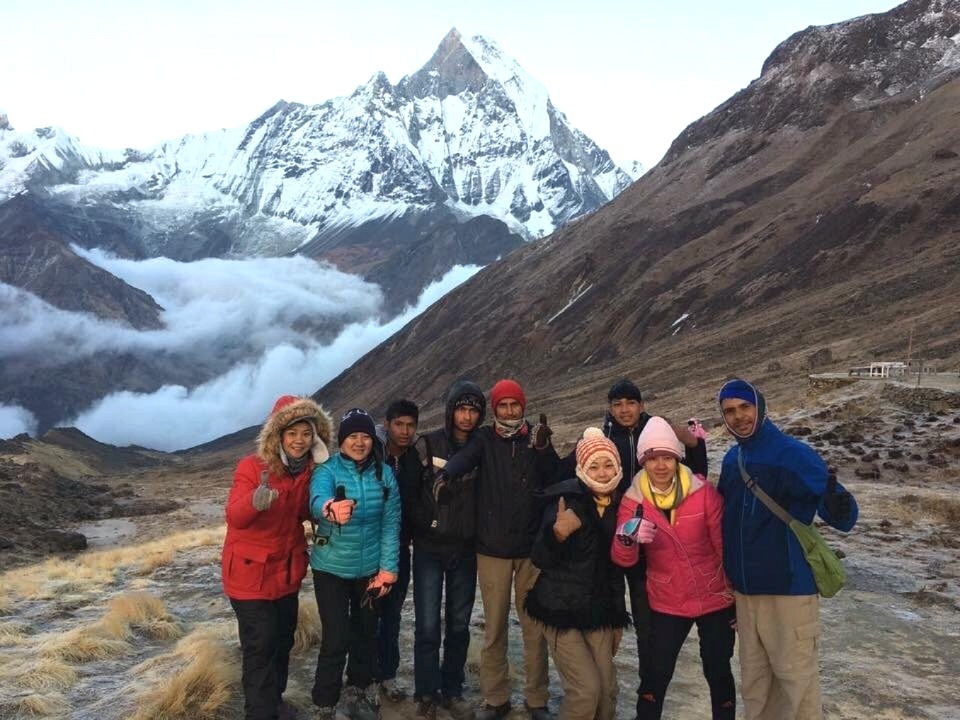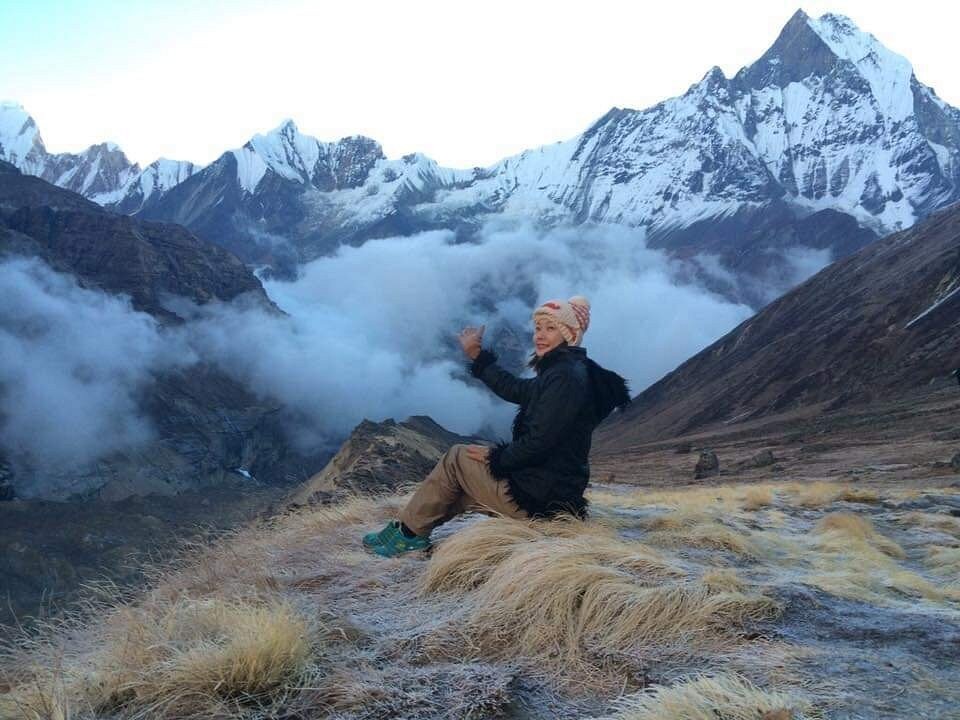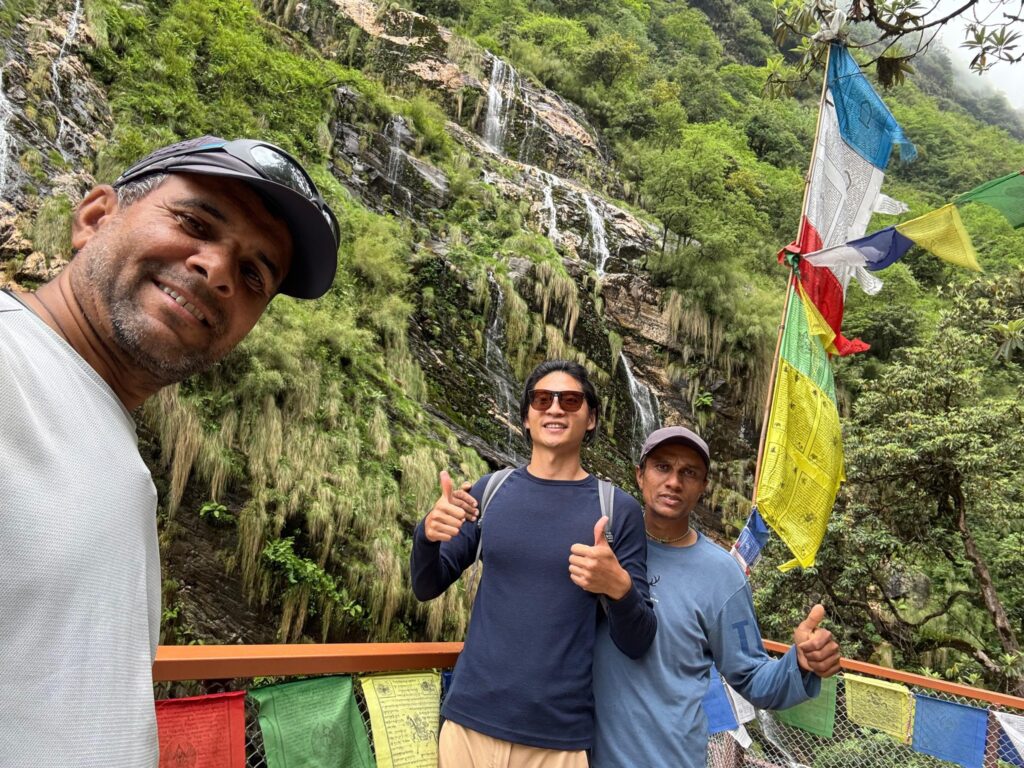The 14 days Annapurna Base Camp trek is a soul-stirring journey into the heart of Nepal’s Annapurna region, where towering peaks, vibrant cultures, and pristine landscapes converge to create an unforgettable adventure. This trek, often called the ABC trek, leads you to the base of Annapurna I, the world’s tenth-highest mountain, at 4,130 meters. It’s a perfect blend of physical challenge, natural beauty, and cultural immersion, making it a bucket-list experience for trekkers worldwide. Below, we list the itinerary as provided, followed by an in-depth exploration of what makes this trek extraordinary, from preparation to the emotional highs of standing amidst Himalayan giants.
Itinerary for the 14 Days Annapurna Base Camp Trek
- Day 1: Arrival in Nepal and Transfer to Hotel
- Day 2: Drive or Flight to Pokhara (800m) (200kms – 7Hrs drive or 30min flight)
- Day 3: Drive from Pokhara to Nayapul and trek to Ulleri (1950m) (42 Kms, 1½ drive and 6 Hrs 11km walk)
- Day 4: Trek from Ulleri to Ghorepani (2850m) (8Km, 5 Hrs)
- Day 5: Trek from Ghorepani to Tadapani (2600m) early morning Poon Hill (3210m) (10Km, 6Hrs)
- Day 6: Trek from Tadapani to Chhomrong (2170m) (10Km, 6Hrs)
- Day 7: Trek from Chhomrong to Bamboo (2310m) (8Km, 5Hrs)
- Day 8: Trek from Bamboo to Deurali (3,200m) (9Km, 6Hrs)
- Day 9: Trek from Deurali to Annapurna Base Camp (ABC) (4130m) (6Km, 5Hrs)
- Day 10: Trek from Annapurna Base Camp (ABC) to Bamboo (15Km, 7Hrs)
- Day 11: Trek from Bamboo to Jhinu Danda (1,600m) Bath in natural hot spring (10Km, 6Hrs)
- Day 12: Trek from Jhinu Danda to Nayapul and drive back to Pokhara (10Km, 6Hrs walk and 42Km 1½ drive)
- Day 13: Drive or Flight from Pokhara to Kathmandu or Lumbini (200kms –7Hrs drive or 30min flight)
- Day 14: Departure from Nepal or follow your Next trip
Why the 14 Days Annapurna Base Camp Trek?
The 14 days Annapurna Base Camp trek stands out for its accessibility and diversity. Unlike more strenuous treks like Everest Base Camp, ABC is moderate, suitable for those with a decent fitness level but no extreme mountaineering experience. The 14-day duration allows for gradual acclimatization, reducing the risk of altitude sickness while giving you time to savor the journey. You’ll traverse lush forests, cross swaying suspension bridges, and pass through villages where time seems to stand still, all while the Annapurna massif looms ever closer.
This trek is not just about reaching a destination; it’s about the stories you collect along the way. From the warmth of teahouse owners to the laughter of children in remote hamlets, the human connections make this journey as enriching as the landscapes. The trek also offers moments of solitude, where the silence of the mountains speaks louder than words, inviting introspection and awe.
Preparing for the Trek
Embarking on the 14 days Annapurna Base Camp trek requires thoughtful preparation. Physical fitness is key, as you’ll be walking 5-7 hours daily, often on uneven terrain with significant ascents and descents. Start training 2-3 months in advance with cardio exercises like hiking, running, or cycling, and incorporate strength training for your legs and core. Practice walking with a loaded backpack to simulate trek conditions.
Gear is another critical aspect. Invest in sturdy trekking boots with good grip, as the trails can be slippery, especially during monsoon season. Layered clothing is essential—pack moisture-wicking base layers, a warm fleece, and a waterproof jacket. Nights at higher altitudes, especially at Annapurna Base Camp, can dip below freezing, so a quality sleeping bag rated for -10°C is a must. Don’t forget trekking poles for stability, a headlamp for early morning hikes, and a reusable water bottle with purification tablets.
Permits are mandatory: the Annapurna Conservation Area Permit (ACAP) and the Trekkers’ Information Management System (TIMS) card. These can be arranged in Kathmandu or Pokhara through a trekking agency or independently. Hiring a guide or porter is optional but recommended, not only for navigation but also to support the local economy. Guides share insights into the region’s culture and ecology, while porters lighten your load, allowing you to focus on the experience.
The Journey Begins: Kathmandu to Pokhara
Your adventure kicks off in Kathmandu, a city that pulses with energy. The sensory overload of its narrow streets, filled with the aroma of street food and the chants from temples, is a fitting prelude to the tranquility of the mountains. From here, you travel to Pokhara, a lakeside haven that feels like a deep exhale. Whether you choose the bumpy 7-hour drive or the swift 30-minute flight, Pokhara’s serene Phewa Lake and distant views of Annapurna set the stage for what’s to come.
The Trekking Experience
The trek begins in Nayapul, a short drive from Pokhara. As you step onto the trail, the chaos of city life fades, replaced by the rhythm of your footsteps and the murmur of the Modi Khola river. The early days take you through terraced fields and Gurung villages, where locals greet you with shy smiles and cups of steaming tea. The climb to Ulleri is a test of endurance, with stone steps that seem endless, but the views of rolling hills make every step worthwhile.
Ghorepani is a highlight, not just for its cozy teahouses but for its proximity to Poon Hill. Waking before dawn to hike to Poon Hill is a rite of passage for ABC trekkers. As the first rays of sunlight paint Annapurna and Dhaulagiri in hues of gold and pink, you’ll feel a surge of gratitude for being in this moment. The descent to Tadapani and onward to Chhomrong introduces you to denser forests, where rhododendrons bloom in spring, creating a riot of color.
As you push higher, the trail becomes more rugged, and the air thins. Villages like Bamboo and Deurali feel like outposts in a wilder world, surrounded by towering cliffs and cascading waterfalls. The final ascent to Annapurna Base Camp is both challenging and exhilarating. Crossing the Machapuchare Base Camp, you catch your first glimpse of the Annapurna Sanctuary—a glacial amphitheater of peaks that feels like a sacred space. At ABC, standing amidst giants like Annapurna I and Machapuchare, you’re struck by the scale of nature and your own smallness within it.
The descent is bittersweet. Retracing your steps through Bamboo and stopping at Jhinu Danda’s hot springs offers a chance to reflect on the journey. Soaking in the warm pools, with the river rushing nearby, is a moment of pure bliss. By the time you reach Nayapul and drive back to Pokhara, you’re not the same person who started the trek. The mountains have a way of leaving their mark on you.
Cultural Encounters
The 14 days Annapurna Base Camp trek is as much about people as it is about peaks. The Annapurna region is home to Gurung and Magar communities, whose traditions and hospitality shape the trekking experience. In villages like Chhomrong, you’ll see women weaving intricate textiles or men tending to yaks, their lives intertwined with the land. Teahouses, often family-run, are hubs of warmth, where you’ll share stories with fellow trekkers over plates of dal bhat, Nepal’s hearty staple.
Festivals, if timed right, add another layer of richness. Dashain or Tihar may bring villages alive with music and dance, offering a glimpse into Nepal’s spiritual heart. Even everyday interactions—like a monk blessing your journey or a child teaching you a Nepali phrase—feel profound. These moments remind you that trekking is not just a physical pursuit but a bridge to understanding a different way of life.
Challenges and Rewards
The 14 days Annapurna Base Camp trek is not without challenges. Altitude is a concern above 3,000 meters, and symptoms like headaches or nausea can creep in. Acclimatization days and a slow pace mitigate this, but listening to your body is crucial. Weather can be unpredictable, with rain or snow at higher elevations, so flexibility is key. The physical demands—long hours of walking, steep ascents, and cold nights—test your resilience.
Yet, the rewards far outweigh the hardships. The sense of accomplishment at Annapurna Base Camp, surrounded by peaks that touch the sky, is indescribable. The camaraderie with fellow trekkers, forged over shared struggles, creates bonds that linger long after the trek. And the quiet moments—sipping tea as mist swirls through a valley or watching a hawk soar above—fill you with a peace that’s hard to find elsewhere.
Best Time to Trek
Timing your 14 days Annapurna Base Camp trek is crucial. Spring (March-May) and autumn (September-November) are ideal, offering clear skies, mild temperatures, and vibrant landscapes. Spring brings blooming rhododendrons, while autumn showcases crisp mountain views. Monsoon (June-August) makes trails slippery and leech-prone, while winter (December-February) can bring snow and extreme cold at higher altitudes, though it’s quieter.
Sustainability and Responsible Trekking
The Annapurna region is a fragile ecosystem, and responsible trekking is essential. Stick to marked trails to avoid erosion, and carry out all waste, as facilities are limited. Support local businesses by staying in teahouses and buying handmade crafts. Respect cultural norms—dress modestly and ask permission before photographing people. Small actions, like using a reusable water bottle, contribute to preserving this pristine region for future generations.
Returning to Civilization
The trek ends in Pokhara, where the comforts of a hot shower and a lakeside meal feel like luxuries. Reflecting on the journey, you’ll realize how the 14 days Annapurna Base Camp trek has changed you. The mountains teach patience, humility, and awe, lessons that stay with you long after you’ve left Nepal. Whether you return to Kathmandu or explore Lumbini, the birthplace of Buddha, the trek’s memories will linger, calling you back to the Himalayas.
Final Thoughts
The 14 days Annapurna Base Camp trek is more than a physical journey; it’s a pilgrimage to one of Earth’s most majestic corners. It challenges your body, enriches your mind, and touches your soul. From the sunrise at Poon Hill to the serenity of Annapurna Base Camp, every moment is a gift. If you’re seeking adventure, connection, and a deeper appreciation for the world, this trek is your path. Lace up your boots, take a deep breath, and let the Himalayas guide you.
